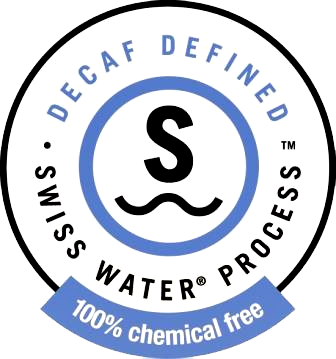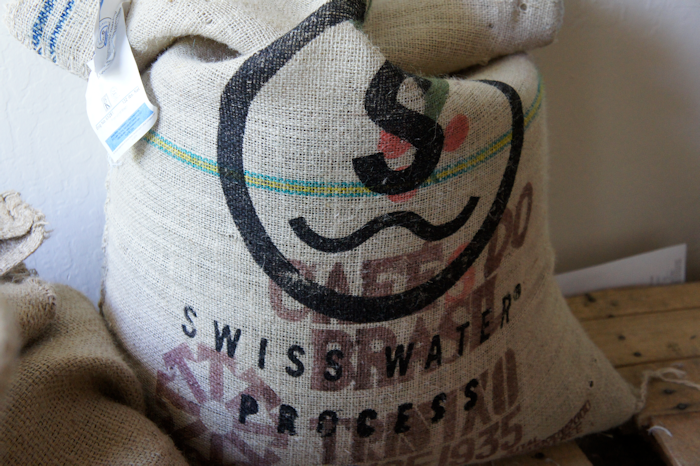 Swiss Water Decaffeination Process
Swiss Water Decaffeination Process
Decaffeination is the removal of caffeine from coffee beans, cocoa, tea leaves and other caffeine-containing materials
Decaffeination processes for coffee uses various methods. The process is performed on unroasted (green) beans and starts with steaming of the beans. They are then rinsed with a solvent that extracts the caffeine while leaving other constituents largely unaffected. The process is repeated from 8 to 12 times until the caffeine content meets the required standard (97% of caffeine removed according to the international standard, or 99.9% caffeine-free by mass per the EU standard).
Swiss Water process
The use of water as the solvent to decaffeinate coffee was originally pioneered in Switzerland in 1933 and developed as a commercially viable method of decaffeination by Coffex S.A. in 1980. In 1988, the Swiss Water Method was introduced by The Swiss Water Decaffeinated Coffee Company of Burnaby, British Columbia, Canada.
 This method is different in that it does not directly or indirectly add chemicals to extract the caffeine. Rather, it relies entirely on two concepts – solubility and osmosis – to decaffeinate coffee beans. The process begins by immersing a batch of green coffee beans in very hot water in order to dissolve and extract the caffeine. The water is then drawn off and passed through an activated charcoal filter. The porosity of this filter is sized to only capture larger caffeine molecules, while allowing smaller oil and flavor molecules to pass through it. However, this extraction process will also extract desirable oils and other solids from the beans, resulting in beans with no caffeine and no flavor in one tank, and caffeine-free but with flavor water in another tank.
This method is different in that it does not directly or indirectly add chemicals to extract the caffeine. Rather, it relies entirely on two concepts – solubility and osmosis – to decaffeinate coffee beans. The process begins by immersing a batch of green coffee beans in very hot water in order to dissolve and extract the caffeine. The water is then drawn off and passed through an activated charcoal filter. The porosity of this filter is sized to only capture larger caffeine molecules, while allowing smaller oil and flavor molecules to pass through it. However, this extraction process will also extract desirable oils and other solids from the beans, resulting in beans with no caffeine and no flavor in one tank, and caffeine-free but with flavor water in another tank.
The Swiss Water process method attempts to overcome this difficulty by first discarding the flavorless caffeine-free beans, and then reusing the flavor-rich water to remove the caffeine from a fresh batch of coffee beans. Water saturated in this way is referred to as green coffee extract or GCE. It is created using a separate batch of green coffee beans, which are immersed in water and then discarded. In a pre-loading tank, water, cane sugar and formic acid are mixed and heated and used to preload carbon filter columns. The GCE is then filtered over the columns to extract caffeine from it. A fresh batch of green coffee beans is then immersed in the GCE to remove caffeine but retain other components. The other components can be retained because the water is already saturated with flavor ingredients, therefore, the flavors in this fresh bath cannot dissolve – only caffeine moves from the coffee beans to the water. This results in decaffeination without a massive loss of flavor. The process of filtering the GCE to remove caffeine and immersing the beans is repeated until the beans are 99.9% caffeine free by mass, meeting the required standard. This process takes 8 to 10 hours.

